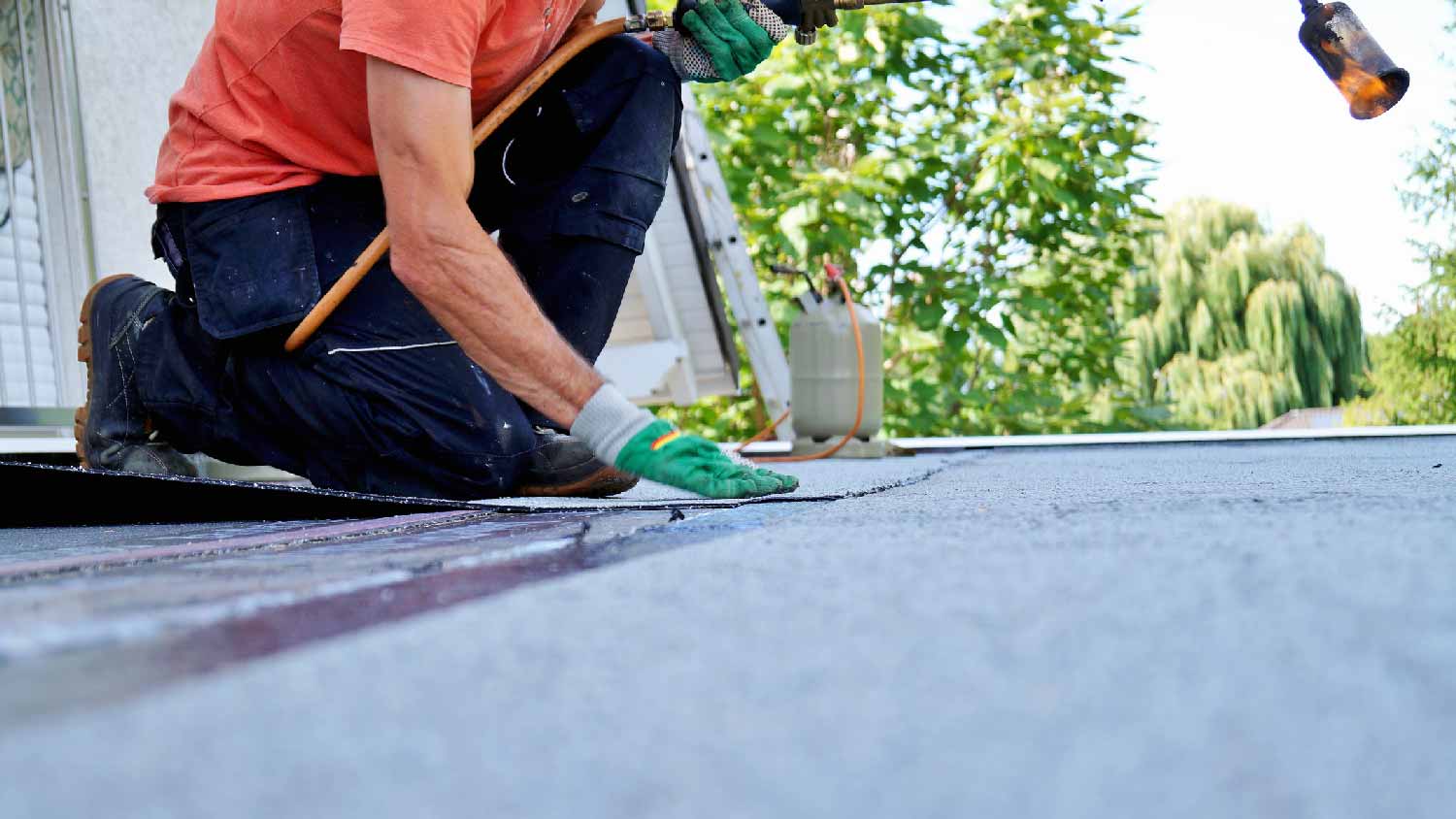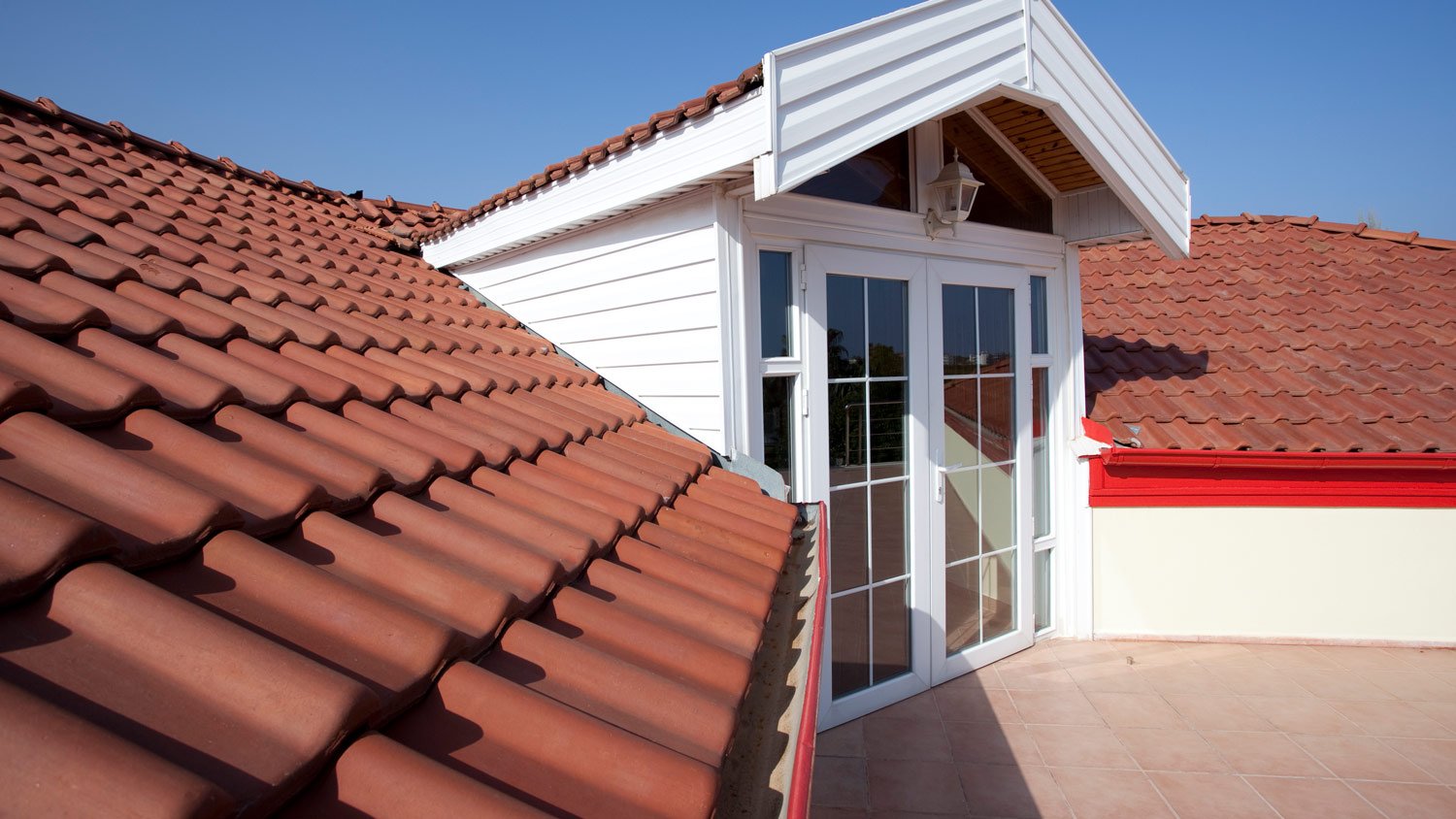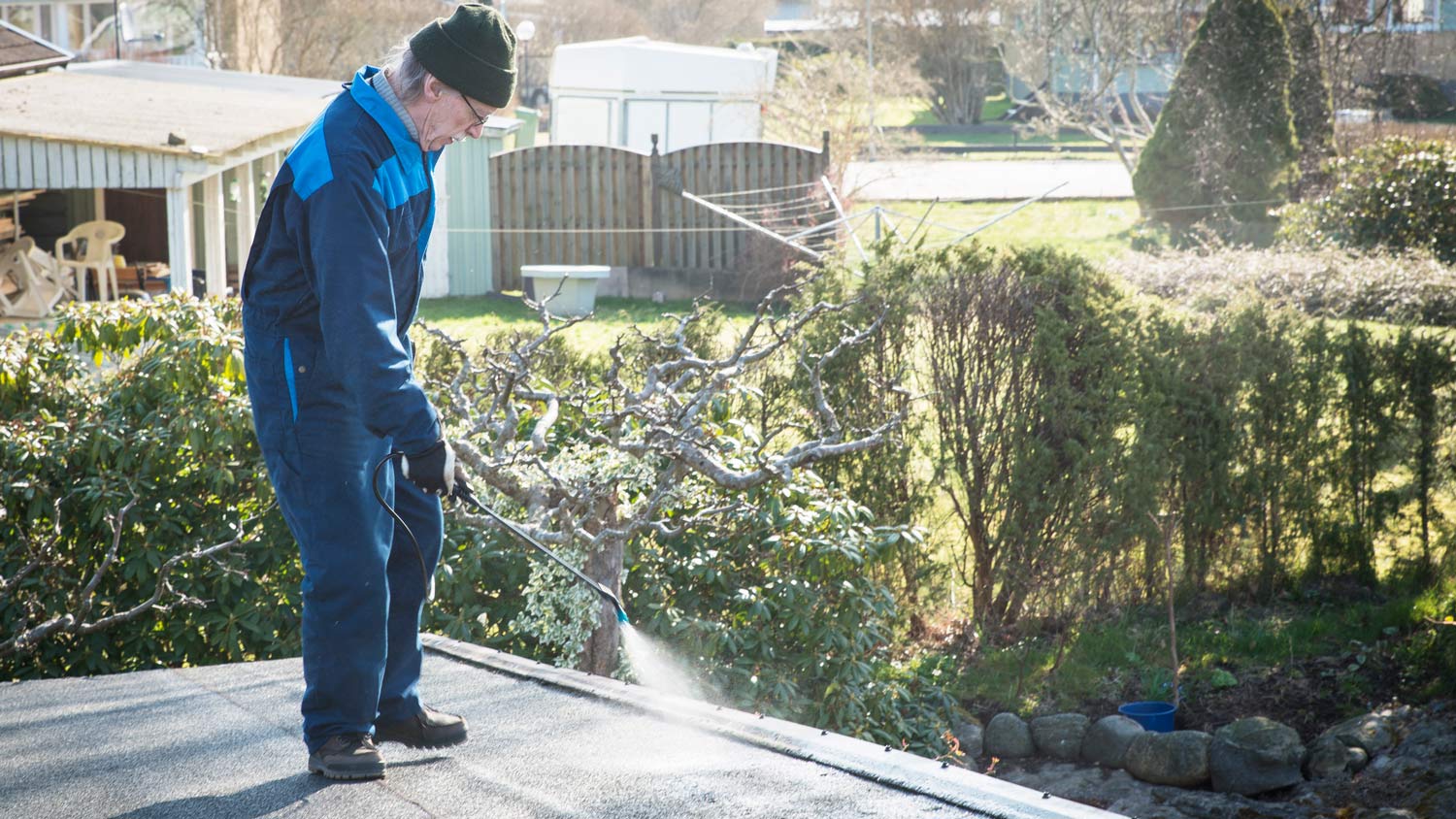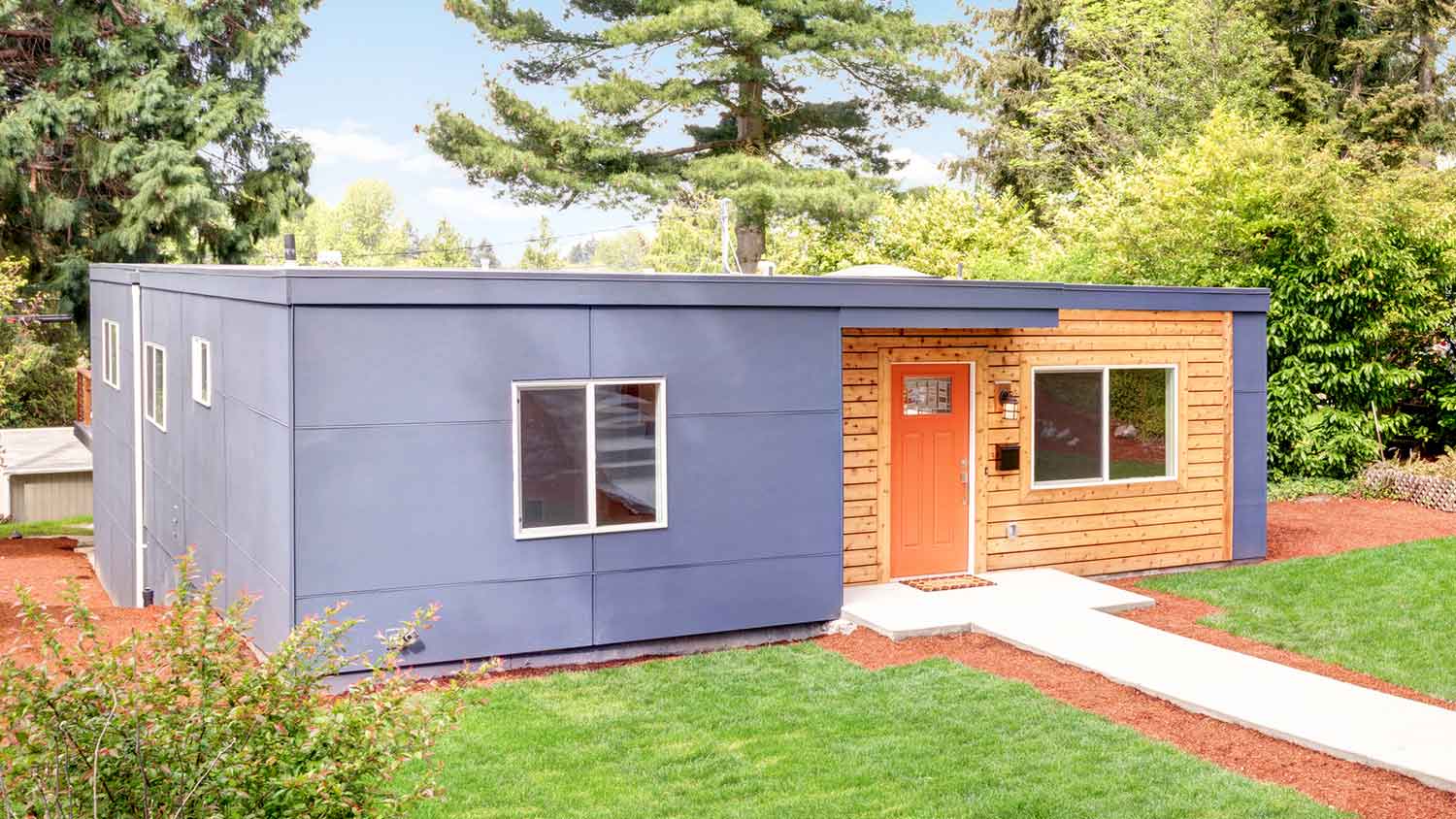How Long Does a Flat Roof Last?
The lifespan isn’t through the roof


With minimal slope, flat roofs see more exposure to standing water and don’t last as long as sloped roofs with asphalt shingles or tiles. But just how long does a flat roof last? In this guide, we’ll explain the lifespan you can expect from your flat roof, what factors influence the lifespan, and some tips for extending the value you get from your flat roof.
How Long Does a Flat Roof Last?
Flat roofs last for between 10 and 30 years, largely depending on the type of flat roof you have. Built-up roofs (BUR)—also known as tar and gravel roofs—last for between 20 and 30 years, while TPO roofs can last for just 10 years with excessive foot traffic and exposure to blown debris.
Factors That Affect Lifespan
There are a few key factors that affect your flat roof lifespan, and you should consider all of these before deciding which flat roof material is right for you.
Type of Flat Roof
There are a few types of flat roofs, each offering different pros and cons and varying lifespans. Built-up roofs and PVC roofs last the longest, with average lifespans of between 20 and 30 years. TPO roofs can last just as long but can last for just 10 years in some cases. Modified bitumen and EPDM roofs fall somewhere in the middle.
| Type of Flat Roof | Lifespan (Years) |
|---|---|
| Built-up roof | 20 to 30 |
| EPDM | 15 to 25 |
| Modified bitumen | 15 to 20 |
| PVC | 20 to 30 |
| TPO | 10 to 30 |
Climate
Climate plays an important role in your flat roof lifespan. Materials like EPDM and TPO will see shorter lifespans in areas with extreme winds, as blown debris and fallen tree branches can more easily puncture these roof membranes and lead to premature leaking. Exposure to excessive UV radiation in sunny areas can also limit flat roof lifespan, especially if you don’t keep up with UV protective coatings. An exception to this would be TPO roofing, which is normally white and reflects more sunlight than other options.
Foot Traffic
Foot traffic can damage any roofing material, but single-ply roof membranes like TPO and EPDM are more likely to get damaged from foot traffic if you’re not careful. Excessive foot traffic on these roofing options could reduce the lifespan to just seven to 10 years.
Maintenance
Some flat roof materials need more maintenance than sloped roofs to ensure they remain waterproof. Maintaining your roof and being proactive about protecting it from extreme weather and sunlight can extend its life and help you get 20 or more years from it before you need roof replacement.
Maintenance Tips for Flat Roofs

Speaking of flat roof maintenance, you can do a few key things to help your roof stand up to the elements for a longer period, ultimately saving you money on replacements and repairs.
Annual roof inspections: Hiring a roofer to complete annual roof inspections is the best way to identify issues early on and get repairs underway before your roof and the materials underneath are damaged beyond repair. They’ll check the different parts of your flat roof for necessary repairs to extend the lifespan.
Cleaning out roof drains: Flat roofs need good drainage to minimize exposure to standing water. Clean out your drains at least once per year, and increase the frequency to twice annually if you have a lot of trees in your area.
Resealing your roof: Many flat roof materials require resealing every two to five years to protect them from UV damage and maintain the waterproof membrane.
Limiting foot traffic: Foot traffic can damage all flat roofing materials, so avoid going on your roof and hire a flat roof company near you for things that require roof access, like inspections and drain cleaning.
Frequently Asked Questions
You can check your building’s interior for evidence of leaks and signs your flat roof needs to be replaced, but the best way to identify issues is to have a roof inspection done once a year. This can uncover small damages before they cause major water damage and lead to the need for roof replacement. Visual damages and tears are also signs you need to replace your flat roof.
Flat roof replacement costs an average of $7,400, and the total normally ranges from $3,300 to $11,500, depending on the size of your roof and the type of flat roof you’re installing. Modified bitumen roofs are the most affordable at $4 to $8 per square foot, followed by built-up roofs at $4 to $10 per square foot. TPO and EPDM roofs cost between $4 and $14 per square foot.
A modified bitumen roof is the most affordable option for a flat roof, costing between $4,000 and $8,000 for a 1,000-square-foot roof. However, this material also has the shortest lifespan of the flat roof materials, so you’ll pay more for ongoing repairs and replacements than you would with most other options. Hire a roofer to help you choose a flat roof material that fits within your budget and will stand up well to the climate in your area for the best value.





- Roofers
- Metal Roofing
- Roof Repair
- Roof Inspection
- Vinyl Siding Repair Contractors
- Flat Roofing Companies
- Commercial Roofing
- Emergency Roofing Companies
- Leaky Roof Repair
- Metal Roof Repair
- Business Roof Repair
- Flat Roof Repair
- Tile Roof Repair
- Slate Roofers
- Rubber Roofers
- Roofing & Siding
- Metal Roof Installation
- Affordable Roofing
- Roof Sealing
- Attic Ventilation Contractors










